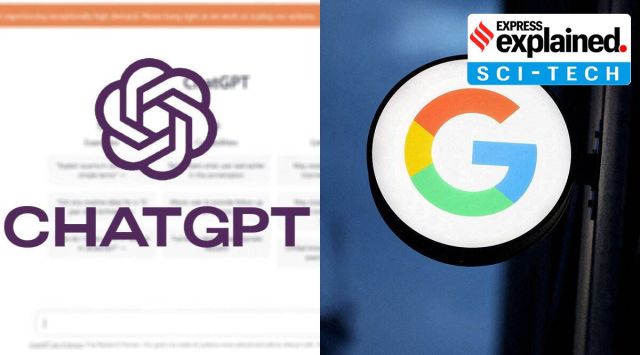Google has made a decisive move in the generative artificial intelligence (AI) race, announcing that it is working on a competitor to ChatGPT called ‘Bard’.


Google’s announcement intensifies the competition to determine what many believe is the future of Internet search. It comes amid reported concerns at the world’s biggest web search company about the increasingly popular ChatGPT stealing a march over it.
Story continues below this ad
However, the company has not announced any plans to merge Bard with Google Search results.
So how will Google’s Bard work?
The service will use artificial intelligence to generate answers in text when people type in queries, similar to what ChatGPT does. In a blog post, Google said Bard can help people perform tasks like planning a baby shower, compare two Oscar-nominated movies, or explain discoveries by NASA to a 9-year-old child.
Sundar Pichai, Google’s CEO, said Bard, which is already available to “trusted testers”, is designed to put the “breadth of the world’s knowledge” behind a conversational interface.
Bard is based on Google’s AI model called LaMDA, which the company had introduced in 2021 as its generative language model for dialogue applications which can ensure that the Google Assistant would be able to converse on any topic.
Story continues below this ad
“This much smaller model requires significantly less computing power, enabling us to scale to more users, allowing for more feedback. We’ll combine external feedback with our own internal testing to make sure Bard’s responses meet a high bar for quality, safety and groundedness in real-world information,” Google said.
Pichai also said that Google plans to make the underlying technology available to developers through an API, as OpenAI is doing with ChatGPT, but did not offer a timeline.
What is the key difference between ChatGPT and Google’s Bard?
It appears that to take on ChatGPT, Google has an ace up its sleeve: the ability to draw information from the Internet. “It (Bard) draws on information from the web to provide fresh, high-quality responses,” Google said in its blog post.
ChatGPT has impressed with its ability to respond to complex queries — though with varying degrees of accuracy — but its biggest shortcoming perhaps is that it cannot access real-time information from the Internet.
Story continues below this ad
ChatGPT’s language model was trained on a vast dataset to generate text based on the input, and the dataset, at the moment, only includes information until 2021.
According to a demo shown by Google, it appears that for questions where there might not be a clear-cut answer, Bard will synthesise a response that reflects differing opinions.
For example, the question, “Is it easier to learn the piano or the guitar?” would be met with “Some say the piano is easier to learn, as the finger and hand movements are more natural… Others say that it’s easier to learn chords on the guitar.”
With the race to build AI-based generative chatbots hotting up, what are the concerns?
The text generation software from Google and OpenAI, while fascinating and eloquent, can be extremely prone to inaccuracies, experts have pointed out. The ability to search the Internet in real-time, including content such as hate speech and racial and gender biases and stereotyping, could lead to problems, and take the sheen off these new products.
Story continues below this ad
As OpenAI builds ChatGPT in public, Google, by its own admission, has taken a more cautious route for Bard, possibly because a lot more is at stake for the giant corporation. In a 2020 draft research paper, AI researchers at Google had flagged the need to proceed carefully with text generation technology, which had irked some executives at the company, and resulted in two prominent researchers, Timnit Gebru and Margaret Mitchell, being fired.









































